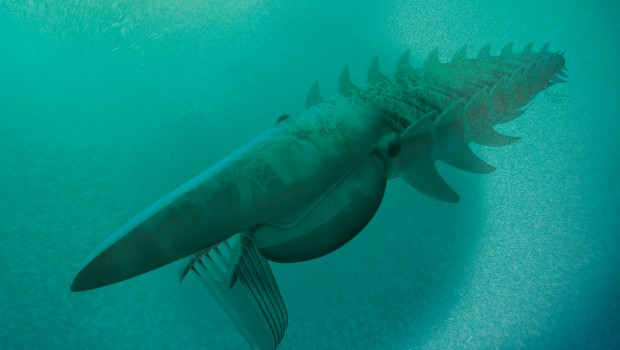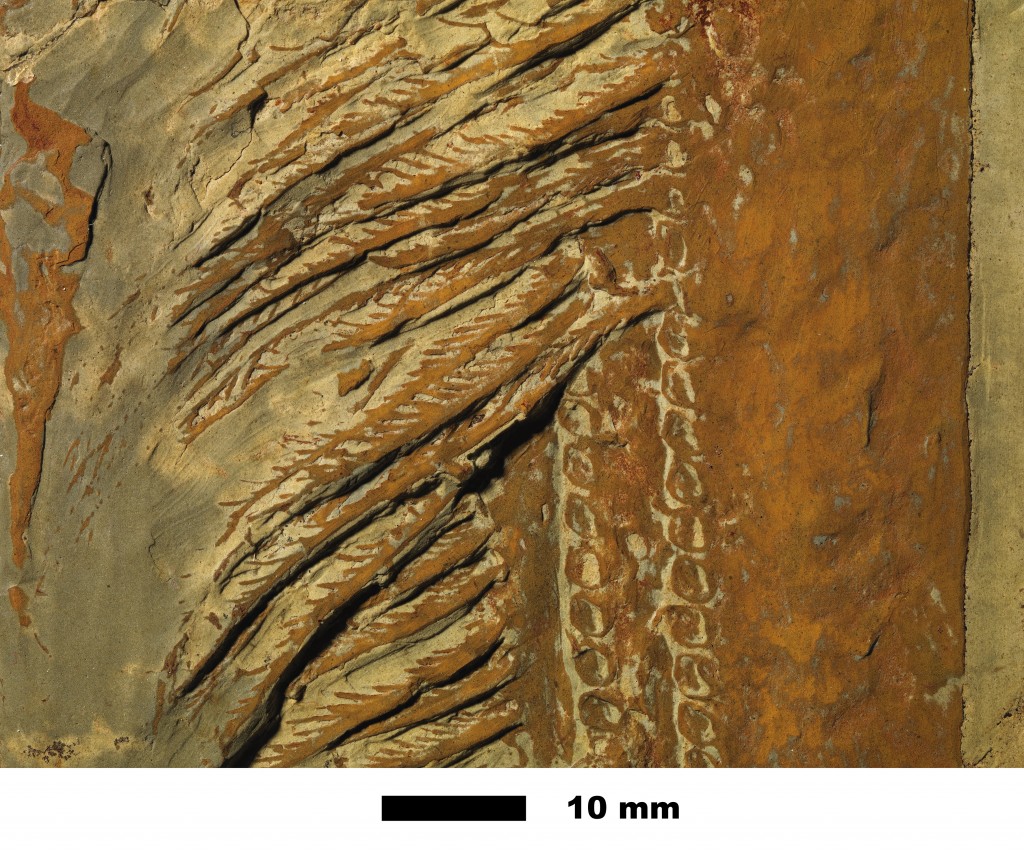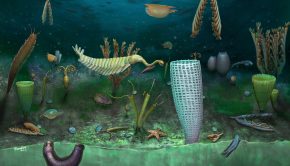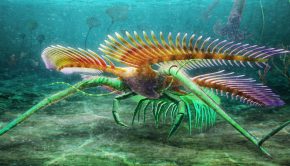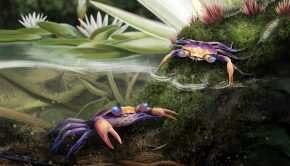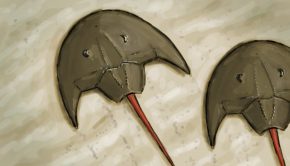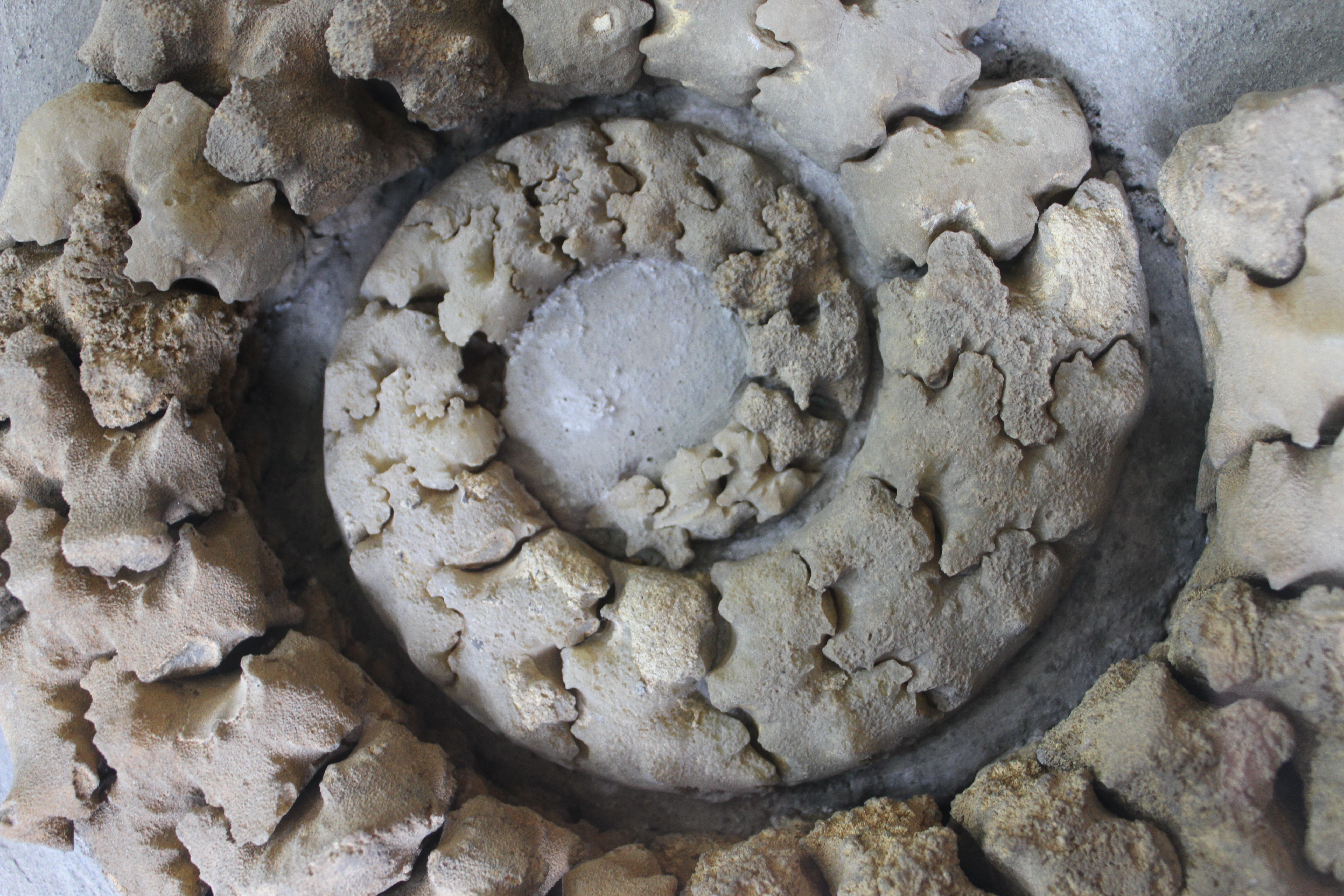New filter-feeding anomalocaridid
Ever since their first appearance in the fossil record some 530 million years ago, arthropods have been the most species-rich and morphologically diverse animal group on Earth, containing, such familiar creatures as spiders, centipedes, crabs, beetles, etc. This unparalleled success is in large part because of how their body is constructed; they possess a hard exoskeleton that is moulted during growth, and their bodies and legs are made up of multiple segments. Each of these segments can be modified separately for different purposes, allowing arthropods to adapt to virtually every possible environment and mode of life. Modern arthropod legs in their most basic form have two branches. Each of these branches is often highly modified or lost to cater for a specific function on that leg – e.g. locomotion, sensory, respiration, copulation, ion exchange, etc. One of the major questions is how these double-branched – or biramous – limbs evolved.
Central to this, and other questions about arthropod evolution, is a long-extinct group, the anomalocaridids. The youngest anomalocaridids known are some 480 million years old, and to our eyes, these animals look very alien: they have a head with a pair of spinose grasping appendages and a circular mouth surrounded by toothed plates. Their elongate, segmented bodies carry lateral flaps that they used for swimming. Until now, it had been believed that anomalocaridids had only one set of flaps per trunk segment. These flaps were considered to be equivalent to the flaps of another, even more primitive extinct group called ‘gilled lobopodians’. In addition to the flaps, gilled lobopodians also have a set of soft, stubby, unsegmented walking legs. This implied that anomalocaridids supposedly had completely lost their walking legs.
The recent discovery of exceptionally well-preserved three-dimensional fossils of a giant new anomalocaridid from the 480 million year old Fezouata Biota in south-eastern Morocco tells another story. The new animal, which was named Aegirocassis benmoulae in honor of its discoverer, Mohamed Ben Moula, shows that anomalocaridids in fact had two separate sets of flaps per segment. Re-examination of other, even older anomalocaridids from the Burgess Shale in Canada showed that these flaps are also present in other species, but had been overlooked. Furthermore, the Moroccan fossils also revealed that filamentous structures on the back of the animal, which were probably used for respiration, were connected to the base of the upper flaps and suspended across the trunk. These discoveries show that anomalocaridids had a layout of appendages equivalent to those of the primitive gilled lobopodians, but with their lower, walking, limbs adapted for swimming. This indicates that the double-branched arthropod limbs we see today evolved by the fusion of these separate limbs, but only after the anomalocaridid branch on the tree of life.
The discovery of A. benmoulae is also remarkable from an ecological point of view: while almost all other anomalocaridids were active predators who grabbed their prey with their spiny head limbs, the Moroccan fossil has its head appendages modified into a very intricate filter-feeding apparatus, allowing it to harvest plankton from the oceans. A. benmoulae attained a massive size of at least 2.1 m in length, ranking it among the biggest arthropods to have ever lived. Importantly, this giant filter feeding anomalocaridid evolved in the early phases of a massive increase in biological diversity, known as the ‘Great Ordovician Biodiversification Event‘, which also shows a sharp increase in plankton diversity. In this way, A. benmoulae foreshadows the appearance of giant filter-feeding whales and sharks in more recent times, and provides a much older example of massive filter-feeders evolving from active predators at the time of a large-scale increase in plankton diversity.
Van Roy, P., Daley, A.C. & Briggs, D.E.G. 2015. Anomalocaridid trunk limb homology revealed by a giant filter-feeder with paired flaps. Nature. DOI:10.1038/nature14256
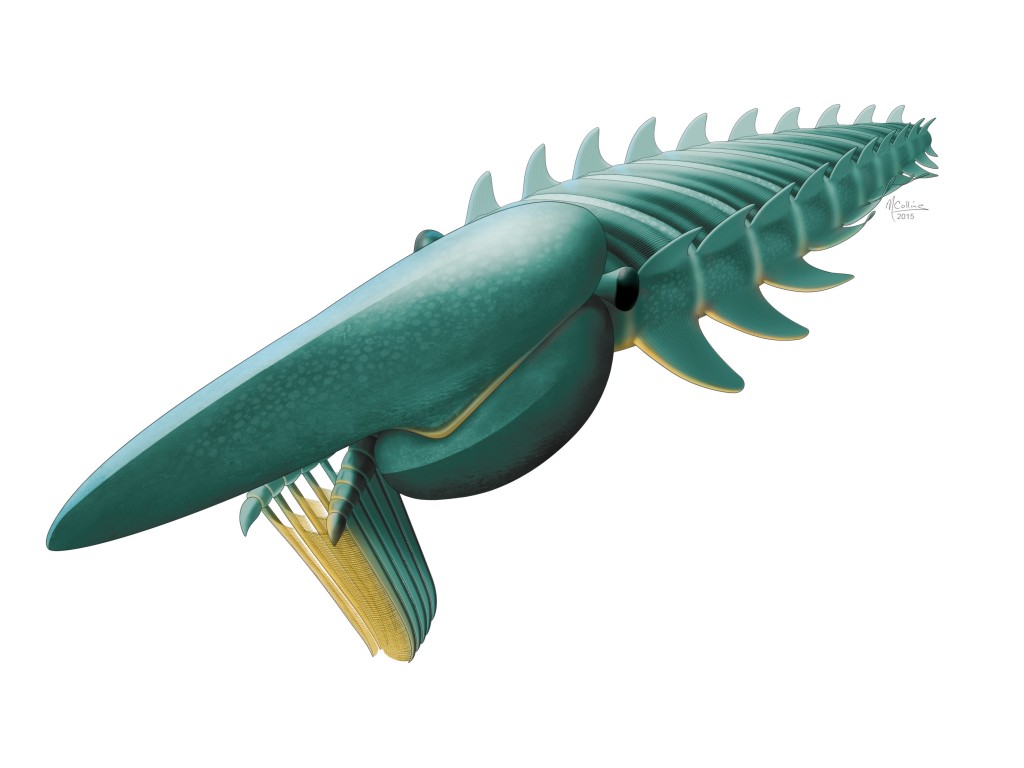
Reconstruction of the giant filter-feeding anomalocaridid Aegirocassis benmoulae from the Early Ordovician (ca 480 million years old) of Morocco. Aegirocassis reached a length in excess of 2m, making it one of the biggest arthropods to have ever lived, and foreshadows the appearance much later of giant filter-feeding sharks and whales. Reconstruction by Marianne Collins, ArtofFact.
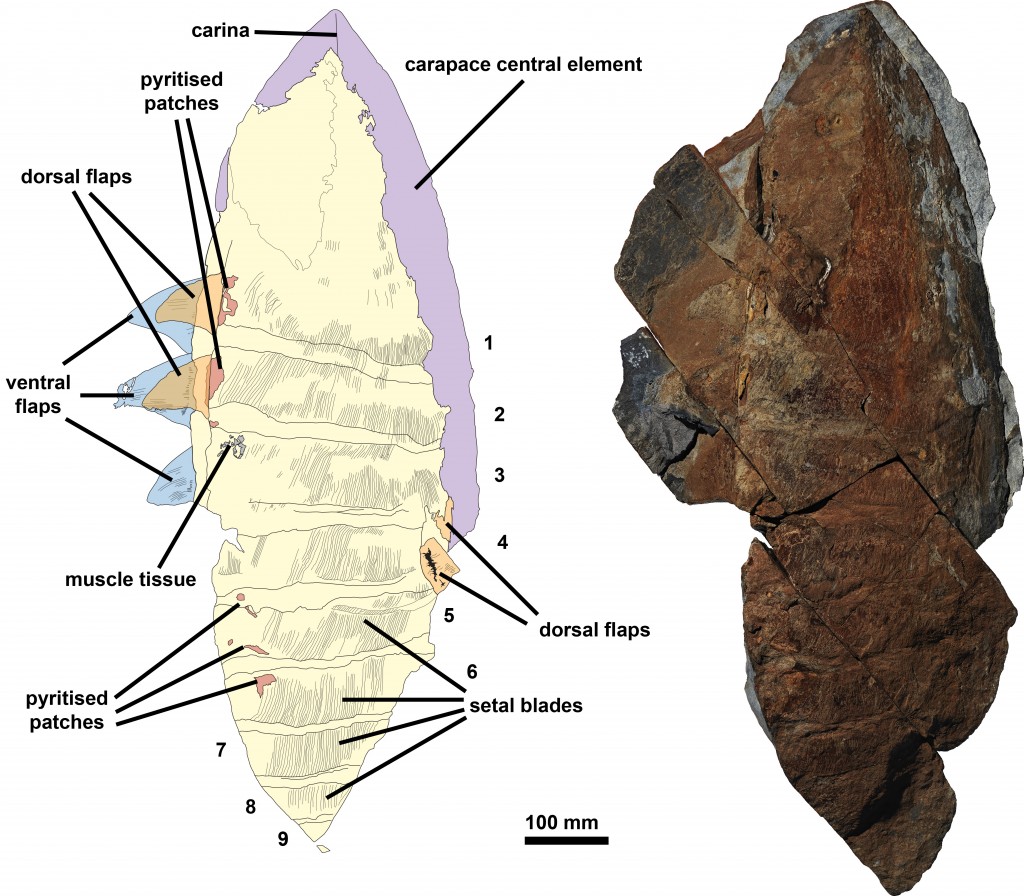
Dorsal view of A. benmoulae, preserved in three dimensions in a concretion; left: explicative drawing; right: photograph of actual specimen. Note the presence of two sets of lateral flaps, providing critical new insights into the origins of modern arthropod limbs. Photograph by Peter Van Roy, Yale University; drawing by Allison C. Daley, University of Oxford.
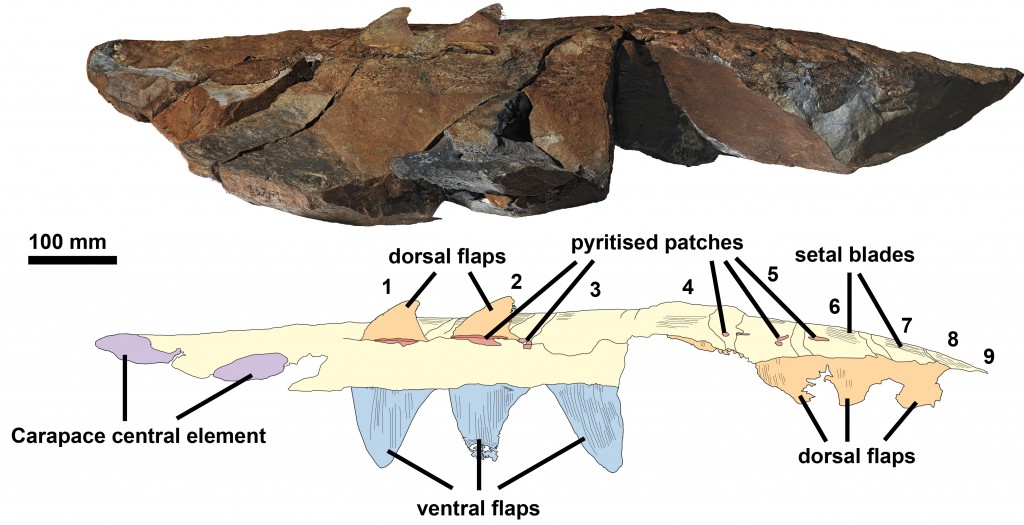
Lateral view of A. benmoulae; top: photograph of actual specimen; bottom: explicative drawing. Photograph by Peter Van Roy, Yale University; drawing by Allison C. Daley, University of Oxford.
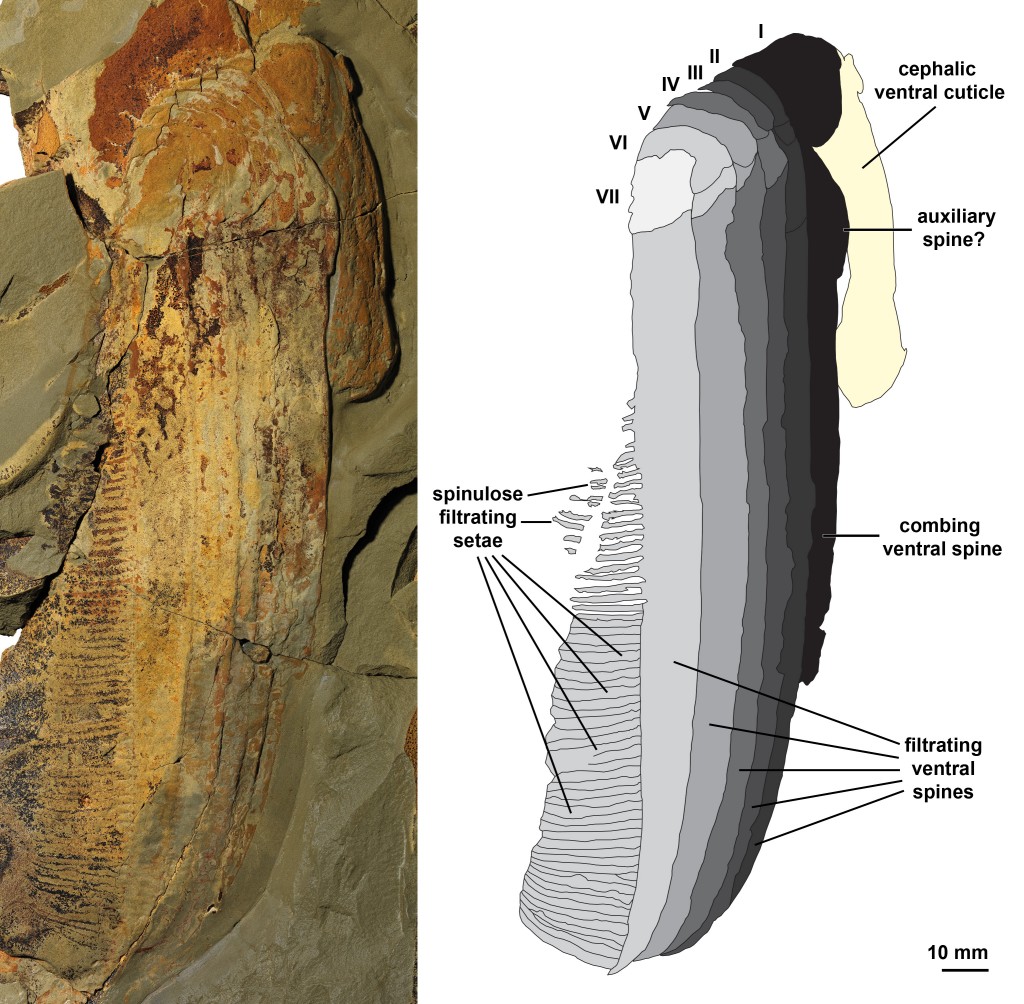
Complete filter-feeding appendage of A. benmoulae. Note the extreme length of the ventral spines of the appendage. Photograph by Peter Van Roy, Yale University.
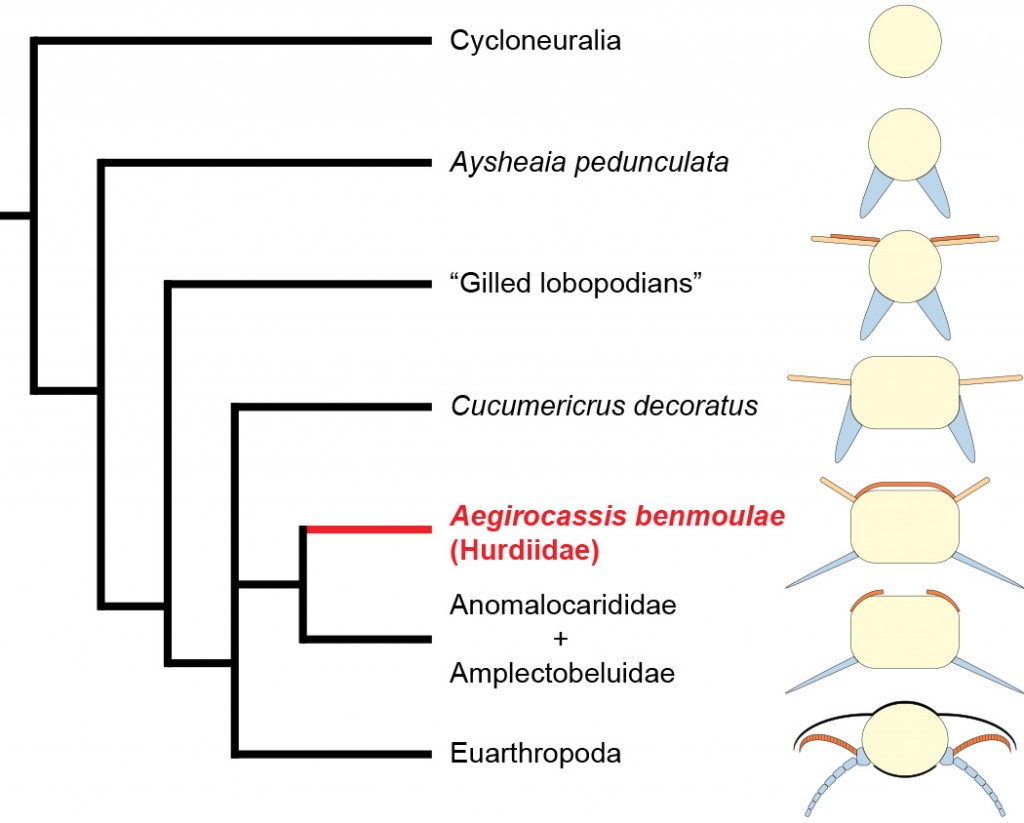
Simplified phylogenetic tree showing the relationships of major anomalocaridid groups and their position basal to Euarthropoda. Schematic drawings on the right represent cross-sections through the bodies of the taxa included in the tree and illustrate the morphological transitions leading to the double-branched arthropod limb. Figure by Peter Van Roy, Yale University.
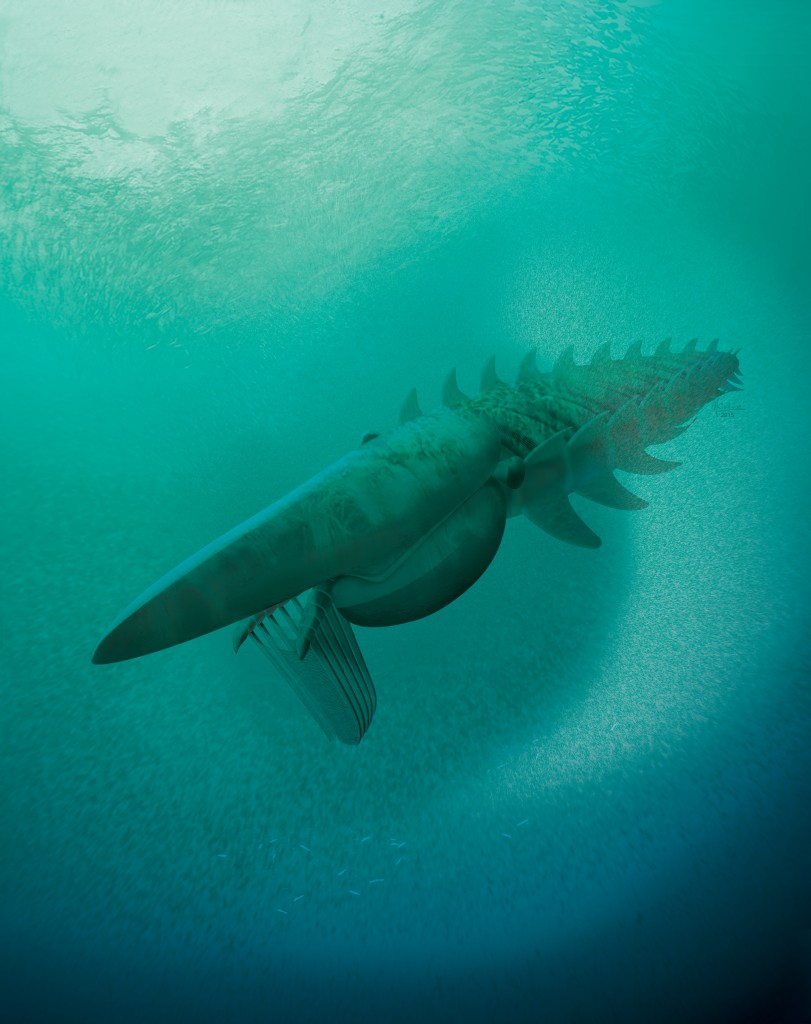
Reconstruction of A. benmoulae feeding on a plankton cloud. Reconstruction by Marianne Collins, ArtofFact.

